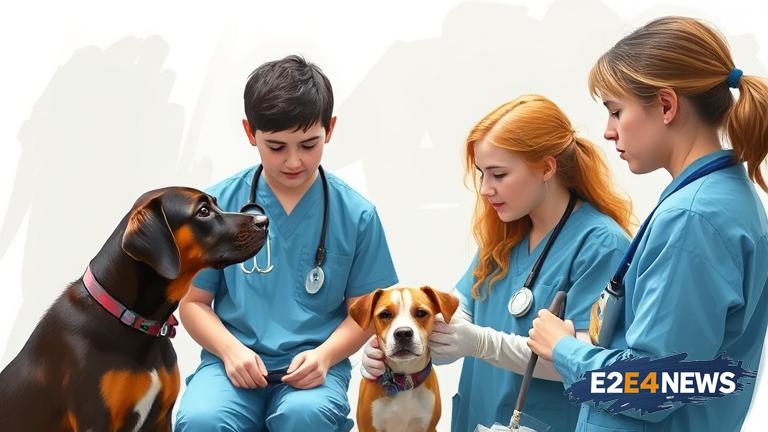The world of veterinary care is expanding, and high school students are taking notice. With the increasing demand for skilled animal health professionals, many young individuals are exploring career paths in veterinary medicine. Through various programs and initiatives, high school students are gaining valuable experience and insight into the field, preparing them for a future in animal care. These programs often include hands-on training, mentorship, and educational workshops, providing students with a comprehensive understanding of veterinary care. By engaging with experienced veterinarians and animal health experts, students can learn about the latest techniques, technologies, and best practices in the industry. This exposure not only sparks their interest but also helps them develop essential skills, such as communication, critical thinking, and problem-solving. As a result, many high school students are becoming more confident in their career choices, with some even pursuing advanced degrees in veterinary medicine. The benefits of these programs extend beyond the individual, as they also contribute to the development of a skilled and knowledgeable workforce, ultimately enhancing animal health and welfare. Furthermore, the growing interest in veterinary care among high school students reflects a broader societal trend, with many people recognizing the importance of animal health and the role that veterinarians play in maintaining it. As the global population continues to urbanize, the demand for veterinary services is likely to increase, creating new opportunities for professionals in the field. In response, educational institutions and organizations are adapting their programs to meet the evolving needs of the industry, incorporating cutting-edge technologies and innovative teaching methods. By fostering a passion for animal care and providing students with the necessary skills and knowledge, these initiatives are helping to shape the next generation of veterinarians. The impact of these programs is not limited to the students themselves, as they also have the potential to inspire positive change in their communities, promoting a culture of compassion, empathy, and responsibility towards animals. In addition, the collaboration between educational institutions, veterinary clinics, and animal welfare organizations is facilitating the exchange of ideas, expertise, and resources, ultimately strengthening the animal health sector. As high school students continue to explore career paths in veterinary care, it is essential to recognize the value of these programs and the role they play in shaping the future of animal health. By supporting and expanding these initiatives, we can ensure that the next generation of veterinarians is equipped to address the complex challenges facing the industry, from animal welfare and conservation to public health and food security. The future of veterinary care is bright, and with the enthusiasm and dedication of high school students, it is clear that the industry is in good hands. As we move forward, it is crucial to prioritize the development of educational programs, resources, and infrastructure, providing students with the opportunities they need to succeed in this rewarding and dynamic field. Ultimately, the growth and advancement of veterinary care depend on the collective efforts of individuals, organizations, and communities, working together to promote animal health, welfare, and conservation. By investing in the education and training of high school students, we are investing in a brighter future for animals, humans, and the environment.
